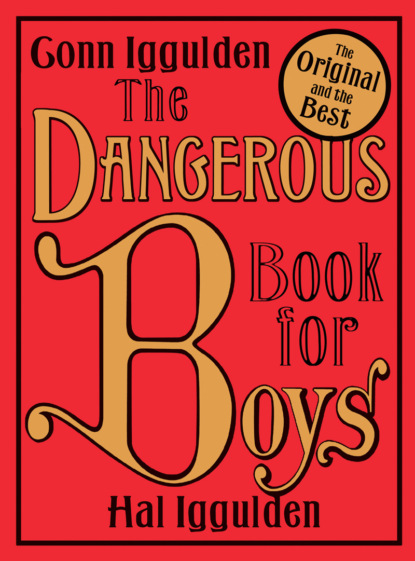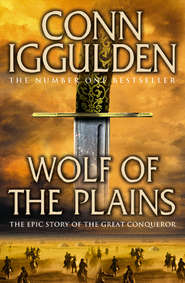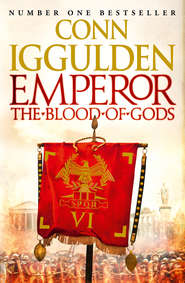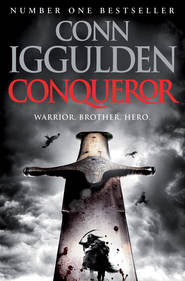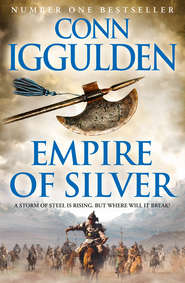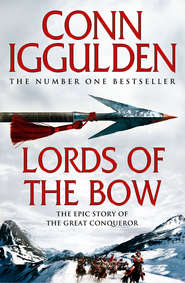По всем вопросам обращайтесь на: info@litportal.ru
(©) 2003-2024.
✖
The Dangerous Book for Boys
Настройки чтения
Размер шрифта
Высота строк
Поля
Like modern crocodiles, dinosaurs laid eggs. Some dinosaurs would look after these until they hatched, like the Maiasaur, which means ‘mother lizard’. The evidence for this comes from the first one found in Montana, in a preserved nest containing regurgitated vegetable matter – suggesting that the parents returned to feed their babies as modern birds do. In addition, the leg bones of the fossilised babies do not seem strong enough to support the infants after birth, suggesting a vulnerable period spent in the nest. In comparison, modern-day crocodiles leave the egg as a fully functioning smaller version of the parent, able to swim and hunt.
In the skies of the Mesozoic, the reptile ancestors of birds ruled. There were many varieties, though most come under the species genus name of Pterodactylus – meaning ‘winged fingers’. Of all species on earth, the link to birds from the Mesozoic era is most obviously visible, with scaled legs, hollow bones, wings and beaks. Many of them resembled modern bats, with the finger bones clearly visible in the wing. As might be expected, however, the Jurassic produced some enormous varieties. The biggest flying animal that ever lived may have weighed as much as a large human being. It was called Quetzalcoatlus – named after the feathered serpent god of Mexican legend. To support its weight it had a wing span of 39 ft (12 m) – like that of a light aircraft. It was almost certainly a glider, as muscles to flap wings of that size for any length of time would have been too heavy to get airborne.
There were no icebergs in Mesozoic seas. In the strict sense of the word, there were no dinosaurs either, as dinosaurs were land animals. However, pre-historic oceans brimmed with a variety of strange and wonderful reptiles, like the giant sea serpent Elasmosaurus. The neck alone grew up to 23 ft (7 m) long and today people believe that ‘Nessie’, the Loch Ness monster, is a surviving descendant of an Elasmosaurus or some other plesiosaur, a similar breed.
Elasmosaurus
Extinction
Hundreds of different dinosaurs roamed the earth seventy-five million years ago, yet ten million years later they had all but died out. Only the birds, their descendants, survived and what happened is still uncertain. An enormous crater in the Gulf of Mexico was almost certainly caused by a giant asteroid hitting earth. The impact occurred sixty-five million years ago, at the same time that the dinosaurs disappeared. Soil samples from the boundary between the Cretaceous and Tertiary periods – the moment of geological time known as the KT boundary – are found to be rich in iridium, an element commonly found in meteors and asteroids.
The asteroid would have hit earth at an incredible speed and dramatically changed the planet’s atmosphere. Huge clouds of rock and dust would have covered the sun, blocking out light and, crucially, warmth. Some animals lived through the changes; scorpions, turtles, birds and insects were just some of those resilient enough to survive. There is no definite explanation for why the dinosaurs vanished, although the asteroid strike is widely supported in the scientific community – at least for the moment.
Making a Bow and Arrow (#ulink_e4c14f1d-ac69-5cea-b2cc-2c08489c6bcd)
AT SOME POINT, you may consider making a bow and arrow. Perhaps because of the British history of using longbows at Agincourt and Crécy, firing an arrow can be immensely satisfying – not to hit anything, even, but just to see it fly and then pace out the yards. The bow in this chapter sent a heavy-tipped arrow 45 yards (41 m), landing point first and sticking in.
Despite the fact that English archers at the battle of Crécy fired arrows three hundred yards (275 m), it was a glorious moment. The current world record is held by Harry Drake, an American, who fired an arrow in 1971, while lying on his back, to a distance of 2,028 yards (1854 m) – more than a mile (more than a km).
Don’t spoil such moments by doing something stupid with yours. The bow and arrow here could be used for hunting or target practice in a garden. Remember at all times that it is a weapon. Weapons are never pointed at other children.
Arrows and Arrowheads
You will need
Flint or bone for arrowheads.
Baked bean tin.
Strong scissors and penknife.
Straight 4 ft (1.2 m) lengths of springy wood – elm, ash or yew.
Straight 1 yd (0.9 m) lengths for arrows.
Thread, glue.
Crosshead screwdriver.
String.
Feathers, usually found, or bought from a butcher.
Strip of leather to protect fingers.
There are a number of ways to make an arrowhead. Stone Age man used flint and it is still intriguing to make a simple arrowhead with this material. Flint is the fossilised remnant of small organisms. It is extremely common in Britain and can be found both in the north and south, in Edinburgh, Yorkshire and Dorset. Our selection came from a ploughed field that was absolutely littered with pieces bigger than a fist. It is usually found with chalk – on what was once the bed of an ocean millions of years ago.
Find yourself a good big piece like the one on the right of the picture. One of the very few benefits of wearing glasses is that your eyes are better protected from shards. If you don’t wear glasses, look away as you bring it down sharply on another flint lump or wear goggles.
You’ll find that with enough of an impact, flint breaks like glass, forming razor-sharp edges that almost instantly suggest axeheads and arrows to you. We found that with a bit of luck, five or ten of these impacts would give you a handful of suitable pieces – shards that look as if they could be shaped into an arrowhead.
You may have seen pictures of Stone Age flints with a series of scalloped semi-circles around the edge. These circles are formed by ‘knapping’ (sometimes spelled ‘napping’), which is a difficult skill. Many people still do it as a hobby, producing ornate as well as functional arrowheads.
Using a pointed implement such as a small crosshead screwdriver, it is possible to nibble away at the sharp edge of a flint until the right shape is achieved. Place the flint on a piece of soft wood, with the edge touching the wood, then press the screwdriver head downwards against the very edge.
It’s a slow and tiring process, but it does work and if it was the only way to kill a deer to feed your family, the time would be well spent. A grindstone, patience and spit can also produce quite decent arrowheads, though without that classic look. A combination of the techniques would also work well.
Remember to leave enough of a ‘handle’ to bind into the arrow shaft – and expect to have a few break in half and be ruined before you have one you like.
The next one we produced with only a grindstone. It is very small at 3/4 in (17 mm) long – but much larger and the arrow range will be reduced.
Bone also works well – and can be shaped on a sanding block very easily. We found that if you give a lamb bone to a big dog, the splinters he leaves behind can be turned into arrowheads without too much trouble.
The easiest arrowheads to make come from tin cans – baked beans, spaghetti hoops, anything. The base and lid will be a flat metal surface. Use a good pair of scissors, and you might find it is very easy to cut yourself and spend the rest of the day at your local hospital. Ask an adult to help with this bit. Leave a long ‘handle’, as in the picture. It will help keep the head securely in place.
Note that these are not that useful for target practice – they bend. They are probably better for hunting rabbits, though we found the movement of drawing an arrow scared living creatures away for half a mile in every direction. For target practice, the best thing is simply to sharpen the wooden arrow tip with a penknife and use a soft target – an old jumper stuffed with newspaper or straw.
The arrows themselves are traditionally made out of very thin, straight branches, whittled, trimmed and sanded until they are perfectly smooth. Dowel rods, however, are already perfectly straight and smooth and can be bought from any large hardware shop. The arrow we made is from an English elm, but any wood that doesn’t splinter easily will do.
There are three important parts to making an arrow – getting it straight, attaching the point and attaching the feathers. The old word for ‘arrow maker’ was ‘fletcher’, and it is a skill all to itself.
If you have a metal tip, simply saw a slit in the end of your arrow, push the head into place and then tie strong thread securely around the arrow shaft to keep it steady. Attaching a flint head like this is only possible if it is a flat piece.
Now to fletch the arrow, you are going to need feathers. We used pheasant ones after seeing a dead pheasant on the side of the road. If this isn’t possible, you’ll have to go to any farm, ask at a butcher’s or look for pigeon feathers in local parks. Goose feathers are the traditional favourite, but are not easy to find. Make sure you have a good stock of them to hand. Feathers are much lighter than plastic and are still used by professional archers today.
With a penknife, or just scissors, cut this shape from the feather, keeping a little of the central quill to hold it together. You can still trim it when it’s finished, so it doesn’t have to be fantastically neat at this stage.
You should leave an inch of bare wood at the end of the arrow to give you something to grip with your fingers as you draw. We forgot this until actually testing the bow.
Also note that the three feathers are placed 120° apart from each other (3 × 120 = 360). The ‘cock feather’ is the one at 90° to the string slot, as in the picture below. Use your eye to place them on the shaft for gluing. During a shot, the arrow rests on the outside of the hand gripping the bow and the cock feather points towards the face of the archer. The other two feathers can then pass the bow at speed without hitting it.
A touch of glue holds the feathers in place, but for tradition and for the look of the thing, you should tie a thread securely at one end, then wind it carefully through each of the three feathers until you reach the other end. This is a fiddly job, but strong thread will create an arrow that is a joy to behold. Tie both ends off carefully, trimming the ends of the thread.
It’s a good idea to prepare five or six of these arrows. There is an excellent chance you are going to break a couple, or lose them. Use a little common sense here and don’t fire them where they can disappear into someone else’s garden.
The Bow
Ideally, the wood for your bow should be straight and springy. It should be cut green and then left somewhere to dry for a year. However, our childhood experience of bow-making was that they were always made on the same day they were cut, so we did that again here. Elm works well, as does hazel and ash. The most powerful bows come from a combination of yew sapwood and heartwood, the dense hedge tree found in every churchyard in Britain. In earlier times, Druids considered yew trees sacred and built temples close to them, beginning an association with places of worship that continues to this day. The red yew berries are extremely poisonous. Do not cut yew trees. They are ancient.
Freshly cut bows do lose their power after a day or two. They should not be strung unless you are ready to shoot and you should also experiment with different types of local woods for the best springiness.
The thing to remember is that the bow actually has to bend. It is tempting to choose a thick sapling for immediate power, but anything thicker than three-quarters of an inch is probably too thick.
If you have access to carpentry tools, fix the bow gently into a vice and use a plane to taper the ends. Most ones you find in woods will have some degree of tapering, which can be redressed at this stage.
We cut all the notches and slots for this bow and arrow with a standard Swiss army knife saw blade. However, a serrated-edge bread knife would do almost as well.
Cut notches in the head and foot of the bow, two inches from the end. Use a little common sense here. You want to cut them just deep enough to hold the bowstring without slipping.





